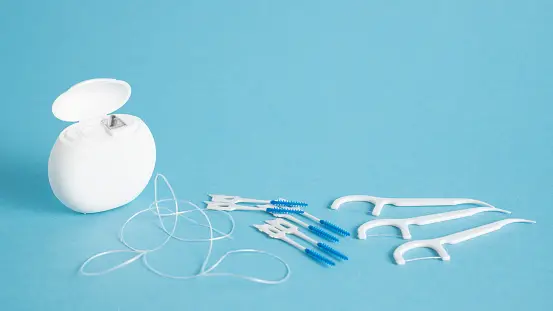
21 May The Importance of Flossing: How It Prevents Gum Disease and Cavities
Flossing For The Future

Flossing is a crucial component of oral hygiene that often gets overlooked in daily dental care routines. While brushing your teeth is essential for removing plaque and food particles from the surfaces of your teeth, flossing goes a step further by cleaning the tight spaces between your teeth and along the gumline where a toothbrush cannot reach. Here is the importance of flossing and providing step-by-step instructions on how to floss effectively.
Importance of Flossing
Maintaining good oral hygiene is not just about having a bright smile; it’s also about promoting overall health and well-being. Flossing plays a significant role in preventing various dental issues and reducing the risk of more serious health problems down the line. Here’s why flossing is so important:
- Prevents Plaque Build-Up: Plaque is a sticky film of bacteria that forms on the surfaces of teeth. While brushing can remove plaque from the outer surfaces of teeth, it often accumulates between teeth and along the gumline. Flossing helps remove plaque from these hard-to-reach areas, preventing the formation of tartar and reducing the risk of tooth decay and gum disease.
- Prevents Gum Disease: Gum disease, also known as periodontal disease, is a common yet preventable condition that affects the gums and supporting structures of the teeth. When plaque and tartar accumulate along the gumline, they can irritate the gums and lead to inflammation, bleeding, and eventually gum disease. Flossing regularly helps remove plaque and debris from the gumline, reducing the risk of gum disease and maintaining healthy gums.
- Reduces Bad Breath: The bacteria present in plaque can produce foul-smelling gases that contribute to bad breath. By removing plaque and food particles from between teeth, flossing helps eliminate the source of bad breath, leaving your mouth feeling fresh and clean.
- Prevents Tooth Decay: Flossing not only removes plaque but also helps prevent the formation of cavities between teeth. When food particles become trapped between teeth, they provide fuel for bacteria to produce acids that can erode tooth enamel and cause decay. By removing these food particles through flossing, you can help protect your teeth from decay and maintain a healthy smile.
- Promotes Overall Health: Emerging research suggests that there may be a link between oral health and systemic health conditions such as heart disease, diabetes, and respiratory infections. By maintaining good oral hygiene, including regular flossing, you may also be reducing your risk of developing these and other health problems.
How to Floss
Flossing may seem straightforward, but many people struggle to do it effectively. Follow these step-by-step instructions to ensure you’re flossing properly:
- Choose the Right Floss: There are various types of dental floss available, including waxed, unwaxed, flavored, and floss picks. Choose a floss that works best for you and your dental needs.
- Break off a Piece: Tear off a piece of floss about 18 inches long. Wind the majority of the floss around one of your middle fingers, leaving about 1-2 inches of floss to work with.
- Hold the Floss: Hold the floss tightly between your thumbs and index fingers, leaving about an inch of floss between them. Use your thumbs to guide the floss between your teeth.
- Gently Glide: Slide the floss gently up and down between your teeth, curving it around the base of each tooth in a C-shape. Be careful not to snap or force the floss, as this can damage your gums.
- Use a Fresh Section: As you move from one tooth to the next, unwind a fresh section of floss from your fingers to ensure you’re using a clean portion for each tooth.
- Repeat: Continue flossing between all of your teeth, including the back teeth and along the gumline. Take your time and be thorough to ensure you’re removing as much plaque and debris as possible.
- Rinse and Dispose: After flossing, rinse your mouth with water to remove any loosened plaque or debris. Dispose of the used floss properly.

Flossing As A Weapon of Defense
Gum disease and cavities are two common yet preventable dental conditions that can have serious consequences if left untreated. Understanding what they are and how they develop is crucial for maintaining good oral health. Additionally, flossing plays a significant role in combating both gum disease and cavities by removing plaque and debris from hard-to-reach areas between teeth and along the gumline. Let’s delve into each of these topics in detail:
Gum Disease (Periodontal Disease)
Gum disease, also known as periodontal disease, is a chronic inflammatory condition that affects the tissues surrounding and supporting the teeth. It typically develops in stages, starting with gingivitis, which is the earliest and most reversible form of gum disease. If left untreated, gingivitis can progress to periodontitis, a more advanced stage of gum disease characterized by irreversible damage to the gums and bone that support the teeth.
The primary cause of gum disease is the accumulation of plaque—a sticky film of bacteria—on the teeth and along the gumline. When plaque is not removed through proper oral hygiene practices such as brushing and flossing, it can harden into tartar (also known as calculus), which harbors even more bacteria and further irritates the gums.
Symptoms of gum disease may include:
- Red, swollen, or tender gums
- Bleeding gums, especially during brushing or flossing
- Persistent bad breath
- Receding gums
- Loose or shifting teeth
- Changes in the way teeth fit together when biting
If left untreated, gum disease can lead to tooth loss and may also be associated with other health problems such as heart disease, diabetes, and respiratory infections.
Cavities (Dental Caries)
Cavities, also known as dental caries or tooth decay, are areas of damage or holes that form on the surfaces of teeth. They occur when bacteria in the mouth feed on sugars and starches from food and produce acids that erode tooth enamel—the protective outer layer of the teeth. Over time, this erosion can lead to the formation of cavities.
Factors that contribute to the development of cavities include poor oral hygiene, frequent consumption of sugary or acidic foods and beverages, inadequate fluoride exposure, and certain medical conditions that decrease saliva production.
Symptoms of cavities may include:
- Toothache, especially when eating or drinking sweet, hot, or cold foods
- Sensitivity to pressure or temperature
- Visible pits or holes in the teeth
- Dark spots or stains on the teeth
If cavities are not treated promptly, they can progress and lead to more significant damage, including tooth infection and abscess formation.
How Flossing Combats Gum Disease and Cavities
Flossing is a critical component of oral hygiene that specifically targets the prevention of gum disease and cavities by removing plaque and debris from areas between teeth and along the gumline where a toothbrush cannot reach. Here’s how flossing helps combat these conditions:
- Plaque Removal: Flossing removes plaque—a primary contributor to both gum disease and cavities—from between teeth and along the gumline. By eliminating plaque, flossing helps prevent the buildup of tartar, which can irritate the gums and contribute to gum disease.
- Gum Health: Flossing helps maintain healthy gums by removing plaque and debris that can cause inflammation and bleeding. By keeping the gums clean and free of bacteria, flossing reduces the risk of gingivitis and periodontitis, the stages of gum disease.
- Preventing Cavities: Flossing removes food particles and bacteria from between teeth, reducing the availability of sugars and starches that bacteria feed on to produce acids. By eliminating these food sources, flossing helps prevent the development of cavities and preserves tooth enamel.
- Promoting Overall Oral Health: In addition to combating gum disease and cavities, flossing contributes to overall oral health by reducing the risk of bad breath, maintaining healthy gums, and preserving the integrity of the teeth and supporting structures.
Incorporating flossing into your daily dental care routine, brushing twice a day, and regular dentist visits is essential for preventing gum disease, cavities, and other oral health problems. Remember, consistent and thorough flossing can make a significant difference in the long-term health of your teeth and gums, helping you maintain a healthy and beautiful smile for years to come.


Sorry, the comment form is closed at this time.